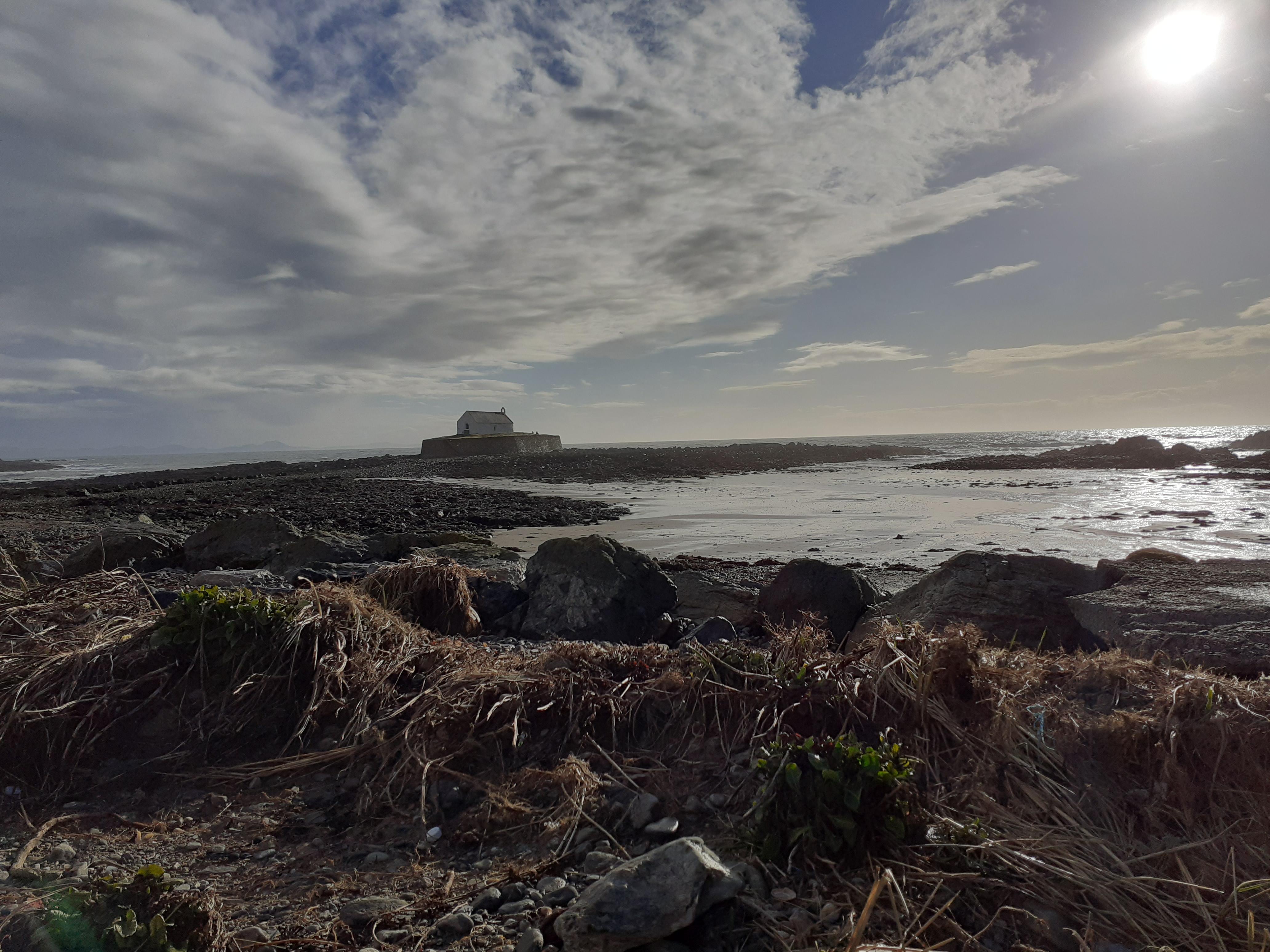St Beuno
Aberffraw, Anglesey
A 12th century parish church, St Beuno's may have been used as a royal chapel during the early Middle Ages, as the princes of Gwynedd had a court in Aberffraw.

It may seem an odd and perilous place to build a church, but St Cwyfan's originally stood at the end of a peninsula between two bays, as shown on John Speed's map of Anglesey from 1636.
Llangwyfan, Anglesey
A causeway was built to the island to allow parishioners to get to the island. Its remains are visible, but even with the causeway, sometimes high tides prevented access. At those times services were held in a room in the nearby house, Plas Llangwyfan, which was specially consecrated for the purpose.
The waves continued to eat away at the island until, in the late 19th century, some of the graves surrounding the church began to fall into the sea. At this time the church was also disused and roofless, having been replaced by a new church further inland. In 1893 local architect Harold Hughes, concerned for the fate of this evocative old church, raised money to save the it by constructing a seawall around the island and restoring the building.
Although the church was initially built in the 12th century, only a small portion of the south wall dates from this period. Most of the walls were rebuilt during a 14th century reconstruction. In the early 16th century an aisle was added to the north side, accessed through an arcade of three arches, but it was demolished in the early 19th century as the cliff edge eroded ever closer. The infilled arches can now be seen in the outer wall, after the old cement mortar was removed during refurbishment in 2006. This refurbishment also involved limewashing the walls, making them very white, to the consternation of some locals who were used to the old grey appearance.
Aberffraw, Anglesey
A 12th century parish church, St Beuno's may have been used as a royal chapel during the early Middle Ages, as the princes of Gwynedd had a court in Aberffraw.
Llangadwaladr, Anglesey
Best known as the burial place of King Cadfan of Gwynedd, who died around 625 AD, shortly after the church was established.
Llanfaelog, Anglesey
Dedicated to St Maelog, a Celtic saint who settled in Anglesey about 1450 years ago.